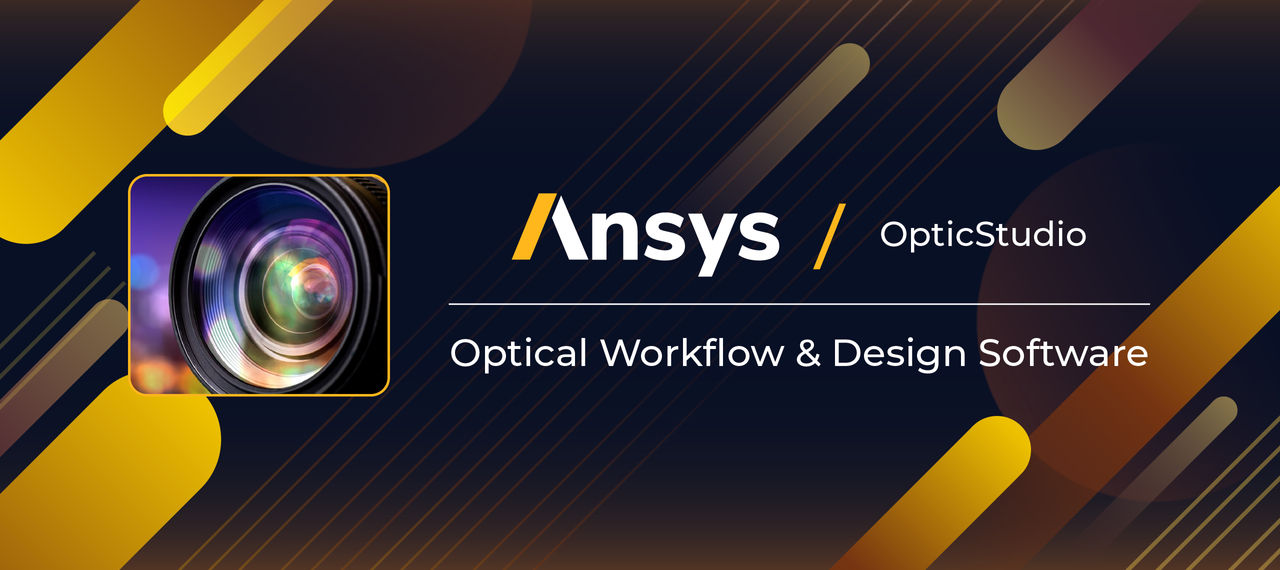Ansys Zemax OpticStudio
Optical Workflow & Design Software
Ansys Zemax OpticStudio is the standard for optical, illumination, and laser system design in universities around the world, and in leading companies throughout the optics industry.
OpticStudio is a simulation software used for designing optical systems and streamlining the optical workflow. It allows for the simulation of the performance of optical systems under various conditions and enables optimization of designs to meet specific performance requirements.
OpticStudio is renowned for its powerful ray tracing capabilities and its ability to handle complex systems with multiple variables.
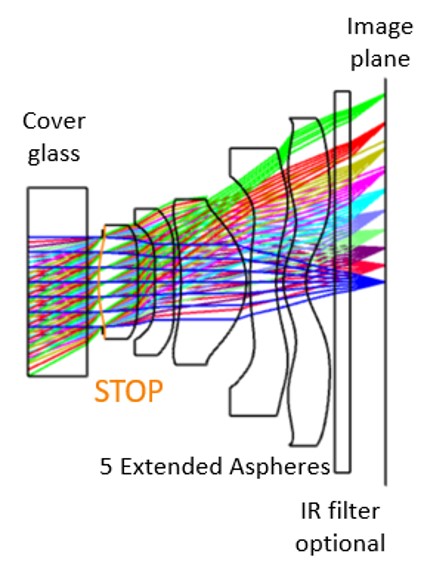
Introduction of Solvers
OpticStudio provides comprehensive analysis and simulation capabilities, allowing you to consider three modes: Sequential ray tracing, Non-sequential ray tracing, and Physical Optics Propagation. These modes enable higher design flexibility and accuracy when designing optical systems.
In Sequential ray tracing mode, rays are traced according to a predetermined surface order, and each surface is traced only once during the process from the object plane to the image plane. Sequential ray tracing is characterized by its fast computational speed, making it highly suitable for analysis, design, optimization, and tolerance analysis of optical systems.
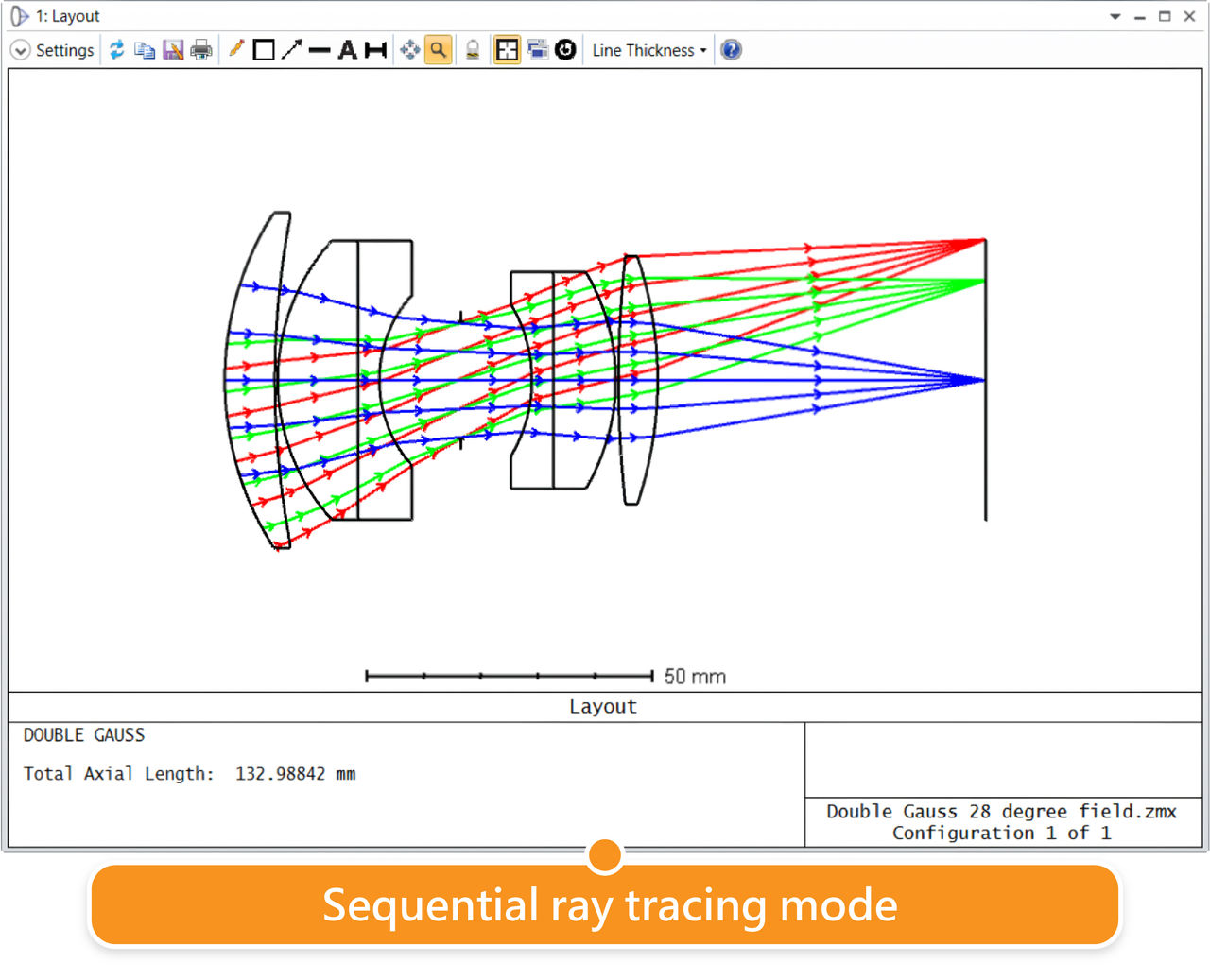
In Non-sequential ray tracing mode, rays do not follow a predetermined surface order. They can trace to any part of non-sequential objects, potentially tracing the same object multiple times or not contacting it at all. Non-sequential ray tracing is particularly useful for ghost analysis, stray light analysis, and other applications such as illumination design.
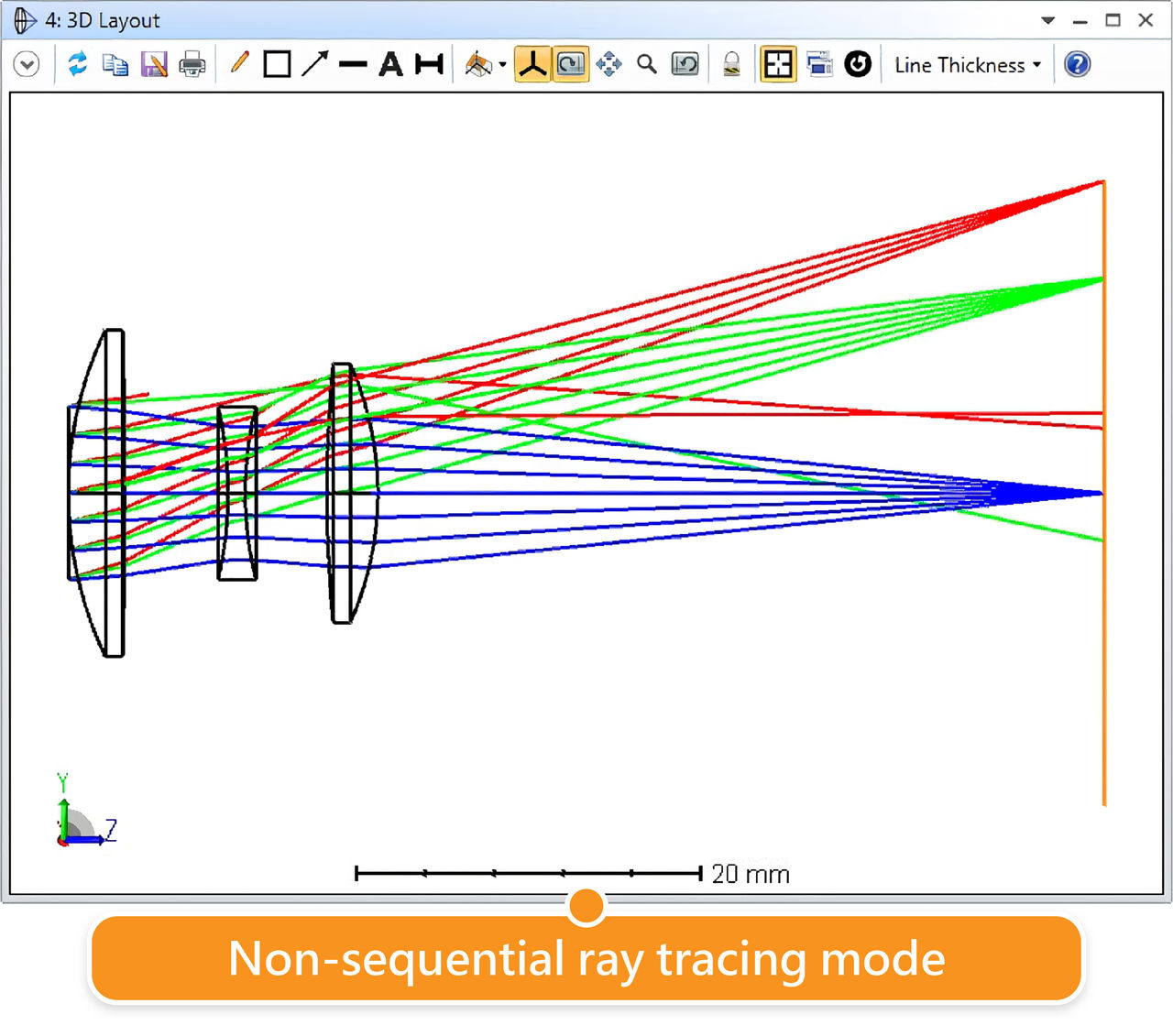
In Physical Optics Propagation (POP) mode, a grid array is used to represent the wavefront of a beam. Each point in the array stores complex amplitude information about the beam. To propagate the beam from one surface to another, Fresnel diffraction propagation algorithm and angular spectrum propagation algorithm are utilized. POP finds applications in laser design, fiber coupling, diffraction propagation, and more.
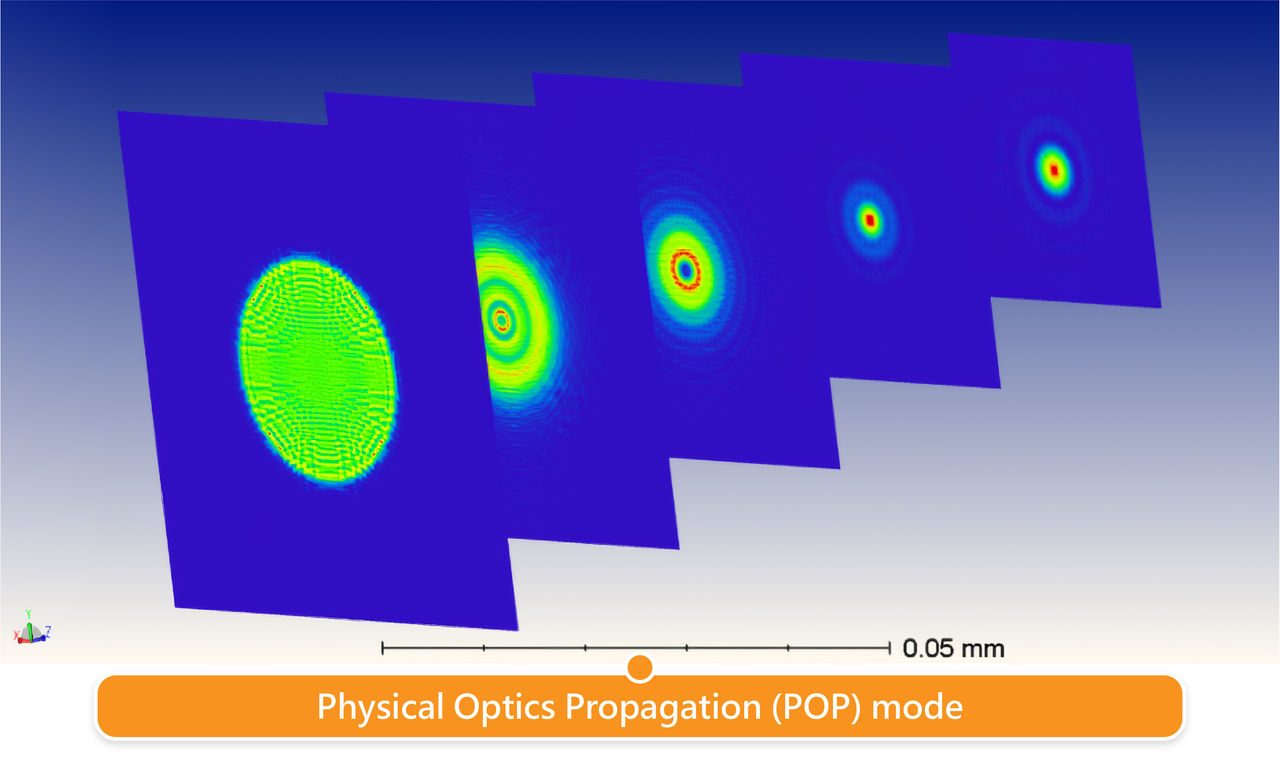
Key Features
OpticStudio provides everything you need for comprehensive optical system design. It enables you to design, analyze, optimize, tolerance analysis, and customize your system.
Design -
OpticStudio can design highly reliable virtual models and is the only optical design software in the industry that can simulate all aspects of optical designs, including imaging optics to illumination.
Analyze -
OpticStudio offers a suite of tools for analyzing the performance of optical engineering systems. It provides tools such as Full-Field Aberration Analysis for improving freeform surface designs, Contrast Analysis for MTF optimization, and Image Simulation for generating realistic images of object scenes.
Optimize -
OpticStudio provides state-of-the-art optimization tools that automatically enhance the performance of optical designs based on user-defined constraints and design goals.
Tolerance Analysis -
Monte Carlo tolerance analysis in OpticStudio has long been regarded as the gold standard for simulating designs in the optical industry in the real world.
Customize -
Through the ZOS-API, you can create standalone applications, build your own analysis tools, and control OpticStudio externally using C#, C++, MATLAB, and Python.
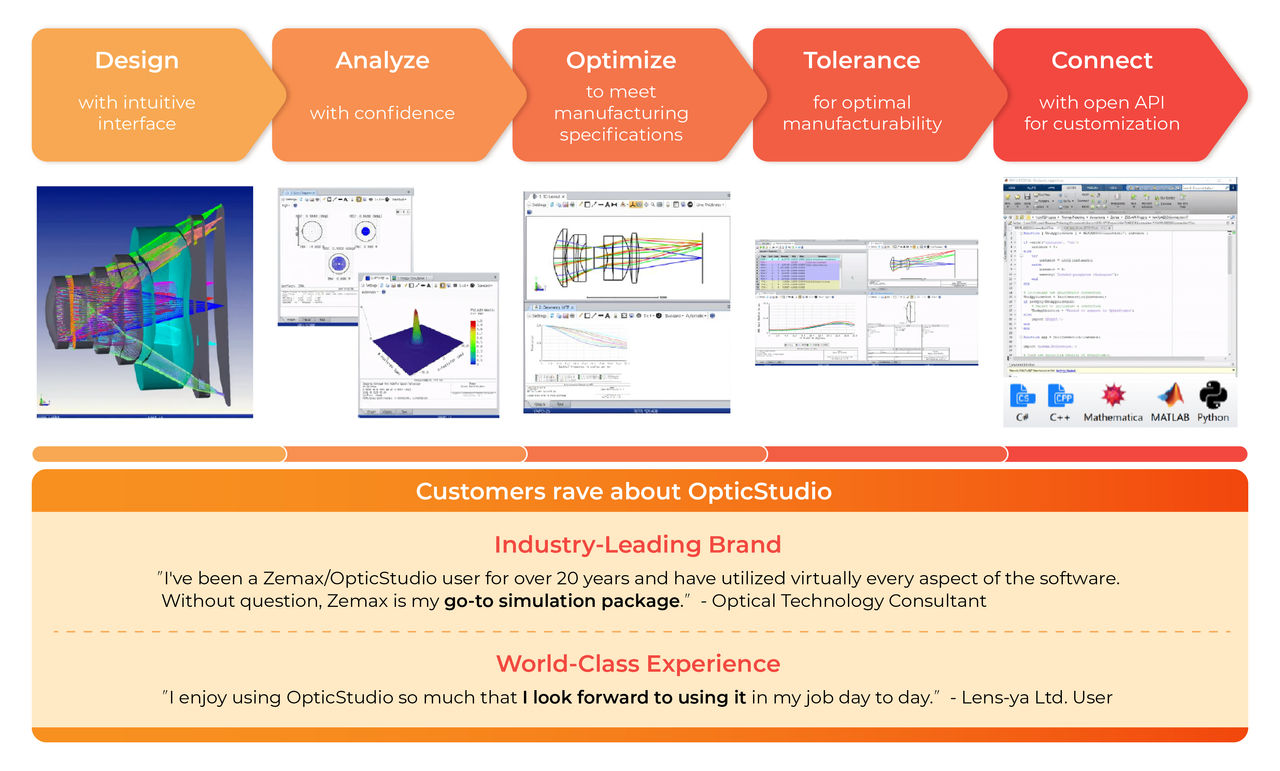
Ansys Website: https://www.zemax.com/
